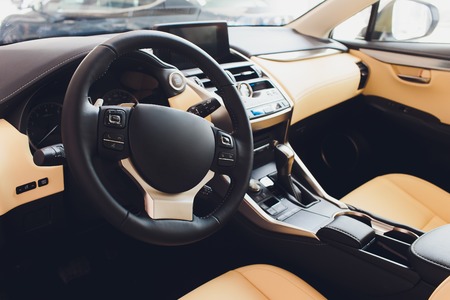1. Introduction
Buying a car is a big decision, and one of the first choices youll face is whether to buy new or used. Both options come with their own set of pros and cons, and the best choice depends on your budget, lifestyle, and personal preferences. When it comes to value for money, there are several factors to consider, including depreciation, maintenance costs, financing options, and warranty coverage.
New Cars vs. Used Cars: A Quick Overview
To help break down the key differences between new and used cars in terms of value for money, here’s a simple comparison:
| Factor | New Cars | Used Cars |
|---|---|---|
| Purchase Price | Higher | Lower |
| Depreciation | Faster in the first few years | Slower, as the steepest drop has already happened |
| Warranty Coverage | Comes with full manufacturer’s warranty | May have limited or no warranty |
| Maintenance Costs | Lower in the beginning | Higher as the car ages |
| Financing Interest Rates | Usually lower | Higher compared to new cars |
What Defines “Value for Money” in a Car Purchase?
Value for money goes beyond just the upfront price. A cars overall cost of ownership includes depreciation, fuel efficiency, reliability, and long-term maintenance expenses. A new car offers the latest features, manufacturer support, and peace of mind, but it also depreciates quickly. A used car costs less upfront and depreciates at a slower rate, but it may require more repairs and have fewer financing benefits.
Why This Debate Matters
Whether you’re shopping for your first car or looking to upgrade, understanding the differences can help you avoid overspending or making a purchase youll regret. The next sections will dive deeper into the costs, advantages, and trade-offs of new vs. used cars to help you make a well-informed decision.
2. Cost Considerations
When deciding between a new or used car, cost plays a major role. Lets break down the key financial factors, including upfront costs, depreciation, financing, and long-term expenses, to see which option offers better value.
Upfront Costs
New cars come with a higher sticker price compared to used cars. Buying a used car can save you thousands of dollars, which can be put toward other expenses like maintenance or insurance.
| Expense | New Car | Used Car |
|---|---|---|
| Purchase Price | Higher | Lower |
| Sales Tax | Higher | Lower |
| Registration Fees | Higher | Lower |
Depreciation
Depreciation is the loss of value over time, and new cars tend to depreciate much faster than used cars. A new car loses about 20-30% of its value in the first year alone, while a used car has already gone through its steepest depreciation curve.
Depreciation Comparison
- New Car: Loses value quickly, especially in the first few years.
- Used Car: Retains value better since the initial depreciation has already occurred.
Financing Options
New cars often come with better financing options, such as lower interest rates and manufacturer incentives. Used cars may have slightly higher interest rates, especially if purchased from a private seller rather than a dealership.
Financing Considerations
- New Car: Lower interest rates and dealer incentives.
- Used Car: Higher interest rates but lower loan amounts.
Long-Term Expenses
While new cars may require fewer repairs initially, they come with higher insurance costs. Used cars may need more maintenance, but their lower price and insurance costs can balance the equation.
Cost Factors Over Time
- New Car: Higher insurance and registration costs, but fewer repairs in the early years.
- Used Car: Lower insurance and registration fees but may require more maintenance.
Considering all these factors, both new and used cars have their financial advantages and drawbacks. The right choice depends on your budget, financing options, and long-term financial plans.
![]()
3. Reliability and Maintenance
When deciding between a new or used car, reliability and maintenance costs are crucial factors to consider. A new car typically comes with the peace of mind of a manufacturer’s warranty, while a used car may require more upkeep and unexpected repairs.
Warranty Coverage
New cars usually include a comprehensive warranty that covers repairs and defects for several years. This means that for a set period, owners don’t have to worry about paying out-of-pocket for major repairs. In contrast, used cars either come with a limited warranty or none at all, depending on where theyre purchased.
| Car Type | Typical Warranty Coverage |
|---|---|
| New Car | Manufacturer’s warranty (often 3-5 years, 36,000-60,000 miles) |
| Used Car | Limited or no warranty (depends on dealership and car history) |
Repair and Maintenance Costs
New cars generally have lower maintenance costs in the first few years. Since all parts are brand-new, unexpected repairs are rare. However, as the car ages, maintenance expenses can increase.
Used cars, on the other hand, may need frequent repairs depending on age, mileage, and prior maintenance. Even if purchased in good condition, wear and tear on older components can lead to additional expenses.
Potential Maintenance Issues
- New Cars: Require only basic maintenance such as oil changes and tire rotations.
- Used Cars: Higher risk of issues like engine problems, brake wear, and transmission failures.
Is a New or Used Car More Reliable?
Reliability depends on several factors, including the car’s make and model, maintenance history, and mileage. While new cars are generally more reliable in the short term, some well-maintained used cars can also be a dependable and cost-effective option.
4. Technology and Features
One of the biggest differences between new and used cars is the technology they offer. From advanced safety systems to modern infotainment features, newer vehicles often provide the latest innovations. However, older models can still offer good value with slightly older but still effective technologies.
Safety Features
New cars come equipped with the latest safety technologies such as adaptive cruise control, automatic emergency braking, lane-keeping assist, and blind-spot monitoring. These systems help reduce the risk of accidents and improve overall driving confidence.
While used cars may also have safety features, they might not include the most recent advancements. However, buyers can often find used cars with features like anti-lock brakes (ABS), traction control, and backup cameras, which still enhance safety.
Infotainment Systems
Modern vehicles boast touchscreen infotainment systems with Apple CarPlay, Android Auto, and built-in navigation. Some even feature wireless smartphone integration and voice assistants for a seamless driving experience.
In contrast, older cars may have basic entertainment systems with Bluetooth connectivity and traditional radio. While they may lack full smartphone integration, aftermarket upgrades can sometimes bridge the gap at a lower cost.
Fuel Efficiency and Performance
Newer cars benefit from the latest fuel efficiency improvements, including hybrid and electric powertrains. Automakers are constantly improving engines to deliver better mileage while reducing emissions.
Used cars, especially older models, may not be as fuel-efficient as newer counterparts, but many still offer reasonable gas mileage. Buyers looking for savings at the pump may need to compare different models carefully.
Comparison Table
| Feature | New Car | Used Car |
|---|---|---|
| Safety Technology | Latest features like automatic braking, lane assist | Varies by model and year; may lack the newest systems |
| Infotainment | Touchscreen, Apple CarPlay, Android Auto | Basic systems; may require aftermarket upgrades |
| Fuel Efficiency | More efficient engines, hybrid or electric options | May not be as fuel-efficient as newer models |
Final Thoughts on Technology and Features
New cars offer the most up-to-date technology, making them appealing for those who value the latest safety and entertainment features. However, used cars still provide solid options, especially for buyers who don’t need cutting-edge systems. Depending on your priorities and budget, both options have their own advantages.
5. Resale Value and Depreciation
One of the biggest financial factors when deciding between a new and used car is depreciation. Depreciation refers to how much a cars value decreases over time. Understanding depreciation can help you make a smarter choice based on long-term value and potential resale price.
How Depreciation Affects New Cars
New cars lose value quickly, especially in the first few years of ownership. The moment you drive a new car off the lot, it typically loses around 10% of its value immediately. Within the first year, the cars value may drop by 15% to 20%. Over the course of five years, a new car can lose approximately 50% to 60% of its original value. This rapid depreciation makes new cars a less attractive choice for those who plan to sell or trade in their vehicle after a few years.
How Depreciation Affects Used Cars
Used cars, on the other hand, have already gone through the steepest part of their depreciation curve. A three-to-five-year-old vehicle has already lost a significant portion of its value, meaning it will depreciate at a much slower rate. This makes used cars a better option for maintaining resale value, as they wont experience the same initial value drop as a brand-new vehicle.
Depreciation Comparison
| Car Age | Percentage of Value Lost |
|---|---|
| Brand New (Just Purchased) | 10% immediately |
| 1 Year Old | 15-20% total |
| 3 Years Old | 30-40% total |
| 5 Years Old | 50-60% total |
What This Means for Resale Value
The slower depreciation of used cars means they typically retain more of their value in the long run compared to new vehicles. If you buy a used car thats around three to five years old, you’re getting a vehicle that has already gone through its most significant depreciation phase. When you decide to resell or trade it in later, the difference in price loss will be much less than that of a new car. This makes used cars the better option for those concerned about resale value.
6. Conclusion
Choosing between a new or used car ultimately comes down to your personal needs, preferences, and financial situation. Both options have their benefits and drawbacks, and understanding these can help you make a more informed decision.
Factors to Consider
| Factor | New Car | Used Car |
|---|---|---|
| Budget | More expensive upfront | Lower initial cost |
| Depreciation | Higher depreciation in the first few years | Slower depreciation |
| Reliability | Brand-new, no wear and tear | May require more maintenance |
| Warranty | Comes with full manufacturer warranty | May have limited or no warranty |
| Features and Technology | Latest safety and tech features | May have older technology |
Who Should Choose a New Car?
If you value the latest safety technology, a full warranty, and low maintenance in the first few years, a new car may be the best choice for you. It is ideal for those who plan to keep their vehicle for a long time and don’t mind the higher upfront cost.
Who Should Choose a Used Car?
If affordability is your main concern and you want to avoid the steep depreciation of new cars, a used car is a great option. It’s perfect for budget-conscious buyers who don’t need the latest features and are comfortable with minor maintenance.
Final Recommendation
There is no one-size-fits-all answer to whether a new or used car provides better value. If you prioritize long-term reliability and modern features, a new car may be worth the investment. However, if you’re looking for the most cost-effective option, a used car can offer significant savings while still meeting your transportation needs. Carefully assess your budget, driving habits, and priorities before making your decision.


